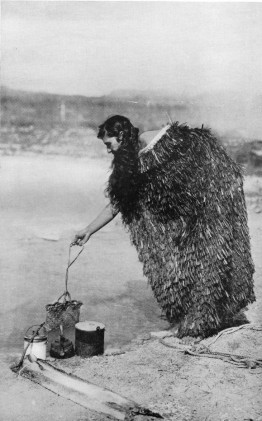Mexican Woven Palm Rain Capes – Sustainable, Handcrafted, Millenary Rain Wear – Edit
Posted: March 21, 2012 Filed under: Uncategorized | Tags: Crafts, Handcrafted, Mexico, Otzi, Rain Wear, Sustainable, Woven Palm Rain Capes 3 CommentsAlthough off topic, I would like to share with readers a very interesting yet overlooked, ancient Mexican craft which has become very rare. That a woven garment design can date back well into prehistory and remain virtually unchanged to this day, makes for an almost incomprehensible contrast with today’s design standards.
Natural fiber rain capes have probably been used by all cultures in the cold and rainy world at some point in time. The oldest rain cape recorded is likely that of Ötzi ‘the iceman’ who was a shepherd living about 5,300 years ago in Italy/Austria.
Like Ötzi and over 50 centuries later, shepherds in Portugal and people all over the world still wore woven rain capes from natural fibers.
Today woven, or thatched rain capes are still used in small pockets of many Pacific Rim countries. They are all variations on the same them, but all are constructed using different weaves and always made using the local materials available in that country.
In China and Taiwan they are made from rice straw.
As are the Mino from Japan and the Tinggian cape from the Philippines.
In New Zealand the Pake and Hieke are made from New Zealand Flax and in Polynesian Hawaii the Kui la’i or Ahu La`i are made from Ti plant leaves.
At least 2 distinct woven styles of woven rain cape exist in Mexico today. The ‘Capote de Palma’ (also ‘Chereque’, ‘Cherépara’, or ‘Chiripe’) as it is known in Michoacan and the ‘Capisallo’ from Tlaxcala can still be found, but only in the most traditional indigenous corners of the country.
In the state of Colima they are called ‘China de Palma Trenzada’ because of their presumed Filipino origins and in Hidalgo and Texcoco they are known as ‘Pachones’.
As the name suggests the Michoacan ‘Capote de Palma’ rain cape is made from palm leaves.
The ‘Capote’ is also known as ‘de Plumas’ because the loose palm leaves looks like a bird’s feathers. I was able to find a ‘Capote de Plumas’ in a small village in central Michoacan, but only because an old lady happened to still own one. I was told that they were still made in the ‘Sierra’, but it was too dangerous to go and that they probably sold ‘Capotes’ in the town of Cherán, the cultural Purépecha center.
The only official historical reference to Mexican woven rain capes I have found is in the book ‘El Traje Indigena en Mexico’ by Teresa Castello Yturbide and Carlotta Mapelli Mozzi, INAH 1965. The book shows a drawing of an Otomi man wearing a cape called a ‘China’.
Edit 20.06.2012 – There is another good image of a ‘Capote de Plumas’ in an oil painting by Edourdo Pingret, titled ‘Pastor del valle de Mexico’. A copy can be found in Artes De Mexico – Cestreria, Volume 38.
Last week I saw this well kept one rolled up rain cape in the Museo Vivo de Artes y Tradiciones Populares de Tlaxcala. Called a ‘Capisallo’, I noticed that although it was also made from palm leaves, the weave was completely different.
Probably the best photo showing how the ‘Capisallo’ is woven comes from Jim Conrad’s Naturalist Newsletter.
Jim writes that “with a bit of effort and guesswork, and using a blade’s hue to follow it through its knots, you can get an idea of how the weaving was done”.
Another good photo of a Mexican rain cape from Oaxaca (nameless), is in Teyacapan’s Flickr photostream about Traditional Mexican costume and crafts. But it is impossible to see if the weave differs from the other Mexican rain capes.
I would be grateful if readers could let me know of any other variants of the Mexican rain cape and the different regional names for it. I think in Oaxaca its also called a ‘Capisallo’.
Photo Via Karen Elwell
Information on where to purchase a Mexican Woven Rain Cape can be found on a more recent blog post titled Pachones in Mexico City.
I wonder how well it would work against rain on a windy day?


























Amazing! someone bring it back to the mass……but ….will they get it unless a company like Chanel or Valentino put it into their collection? …..
Like the Christian Louboutin Mexibeads shoes using Huichol bead designs without giving credit, or mention to the Huichol.
http://74fdc.wordpress.com/2012/04/24/huichols-unkown-bead-artists-from-mexico/
[…] Wolle / Filz mit Wollfett (Lanolin) behandelt, um sie wasserdicht zu machen. Zudem war das Verweben verschiedener Blätter bzw. Stroh oder Flachs weltweit eine jahrtausendealte Traditionelle Methode, sich mit so hergestellten Capes vor Regen zu […]